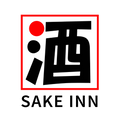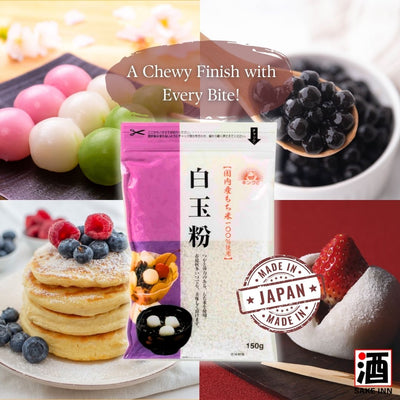Sake Guide: Types of Sake
The different classifications of sake was briefly introduced in our Sake Guide: Basics, previously. In this guide, we would delve deeper into the differences in the various types of sake. The classification of sake can be split mainly into two groups: pure rice (junmai) and alcohol-added sake.

The sake classification chart (above) shows you the different types of sake that are available and its respective rice polishing ratio.
Junmai 純米
Junmai 純米 sake is made solely from rice and there is no addition of distilled alcohol or additives during the brewing process. The word junmai literally translates to 'pure rice'. The different types of sakes that can be classified under this category are mainly Junmai Daiginjyo, Junmai Ginjyo, and Junmai. The classification is due to the difference in their rice polishing ratio, which determines its 'quality'.
 Junmai Daiginjyo is often regarded as the highest grade of sake due to the higher rice polishing ratio of 50% or less. They are usually pricier as they require more intensive labour during production. As most of the outer layer of the rice is removed and more starch remains, the end product of such sake usually has a lighter and more refined taste. Fruity, floral scents are not unusual as brewers aim for delicate, elegant and nuanced flavours. In order to preserve the flavour profile, junmai daiginjyos are usually recommended to be served chilled.
Junmai Daiginjyo is often regarded as the highest grade of sake due to the higher rice polishing ratio of 50% or less. They are usually pricier as they require more intensive labour during production. As most of the outer layer of the rice is removed and more starch remains, the end product of such sake usually has a lighter and more refined taste. Fruity, floral scents are not unusual as brewers aim for delicate, elegant and nuanced flavours. In order to preserve the flavour profile, junmai daiginjyos are usually recommended to be served chilled.
Try: Ginrei Gassan Junmai Daiginjyo Sake
Junmai Ginjyo is also another kind of premium sake with a rice polishing ratio higher than that of a junmai daiginjyo of about 55%. The term "ginjyo" is synonymous with premium sake. Junmai Daiginjyos and Junmai Ginjyo account for about 3% of all sake production. Such sake is best enjoyed chilled as premium Ginjyo sake is much more delicate, fragrant, and complex than non-premium sake. Warming up these premium sakes might mask and ruin their delicate flavors.
Try: Kubota Senjyu Junmai Ginjyo Sake
Tokubetsu Junmai has a rice polishing ratio of ~60%. The word 'tokubetsu' means that the sake has a rice polishing ratio of 60% or less or is made with special production techniques. Even though the rice polishing ratio can be quite similar to Junmai Ginjyo's it does have a distinct and slightly varying flavour. Usually light and subtle on the nose.
Try: Okunomatsu Tokubetsu Junmai Sake
Junmai Sake's rice polishing ratio can be unspecified. As long as it is made from only rice, with no brewer's alcohol added, the sake can be labeled as junmai. Often a full and solid flavor profile, clean and well structured. Typically high in acidity and umami, with relatively little sweetness.
Try: Ozeki Rai Junmai Sake
Alcohol-added Sake
Any other sake without the word 'junmai/純米' in it, usually means that brewer's alcohol has been added during the production. However, the addition of alcohol does not mean that such sake is lower in quality. It is a matter of taste to determine what kind of sake you would prefer. Added alcohol can even enhance aromas and achieve varying distinct flavours. The different types of sake under this category includes Daiginjyo, Ginjyo, Honjyozo, and Futsushu.

Daiginjyo has a rice polishing ratio of 50% or less. With a similar polishing ratio as junmai daiginjyo, there would be similarity in terms of flavour profiles. Daiginjyos are refined in taste, with a slightly stronger fruity taste as compared to ginjyo sakes. Best served chilled.
Try: Momokawa Daiginjyo Sake
Ginjyo sakes have a rice polishing ratio of at least 60%. Fermentation occurs at lower temperatures and takes longer. Distilled alcohol equivalent to up to 10% of the weight of the polished rice may be added. Usually lighter and lower acidity, with a slightly fruity aftertaste.
Try: Dewazakura Ouka Ginjyo Sake
Tokubetsu Honjyozo has a rice polishing ratio of ~60%. As mentioned, Tokubetsu's are made using special production techniques. It often requires more highly polished rice, or the use of very special sake rice as compared to Honjyozo, thus is often considered to be better than regular Honjyozo. Its delicate aroma is enhanced when enjoyed chilled or warmed.
Try: Hakkaisan Tokubetsu Honjyozo Sake
In Honjyozo, distilled alcohol is added to give cleaner sake taste. It has a reasonable level of acidity and umami and warming the sake can help to bring out the aroma and flavours of the sake.
Try: Kikusui No Karakuchi Honjyozo Sake
Futsushu is also known as table sake or everyday sake. Makes up about 80% of the entire sake market thanks to its affordable price range. As a value sake, distilled alcohol is added to lower the cost and the rice polishing ratio is usually unspecified. There is no minimum rice polishing ratio required to consider a sake as a futsushu. A good futsushu would be deliciously smooth and flavourful, and balanced. There is a reason why it is called an 'everyday' sake too.
Try: Koshi No Kanbai White Label Futsushu
——
However, do not let us stop you from enjoying your sake in any way you want. Try out various drinking methods and the various types of sake to find one that you truly enjoy. Learn more about the basics of sake, such as rice polishing ratio and sake meter value in our previous blog here. Do let us know if you have any particular preference in drinking sake down in the comments below 😌




















Leave a comment